One of Turkey’s most impressive natural formations, the fairy chimneys offer fairytale-like landscapes, especially in the Cappadocia region. These extraordinary rock structures, formed over hundreds of thousands of years through volcanic eruptions, wind, and water erosion, are a unique example of nature’s patience and power. Shaped like towers, these rock formations not only provide a visual feast but have also hosted various civilizations throughout history, with their interiors carved out to create churches, homes, and monasteries.
Fairy chimneys are a fascinating natural wonder that attract both scientists and travelers. Standing out not only with their natural structure but also with their cultural and historical depth, these formations are among Turkey’s most visited tourist destinations. Walking through the valleys of Cappadocia among fairy chimneys of various shapes offers visitors traces of the past and the miracles of nature at the same time.
How Were the Fairy Chimneys Formed?
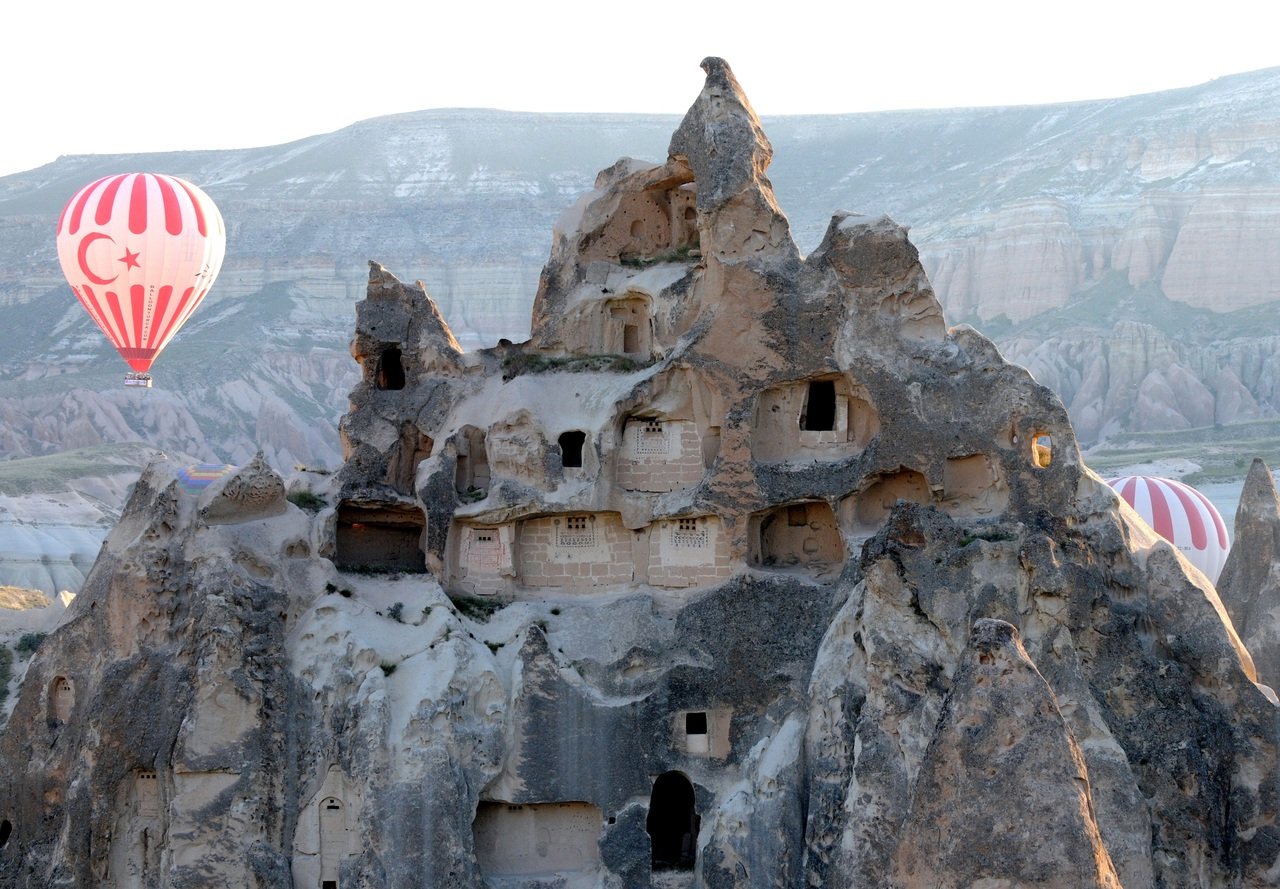
Fairy chimneys are natural formations that have emerged as a result of geological processes lasting millions of years. Their formation began with the eruptions of volcanoes in the region such as Erciyes, Hasan, and Güllüdağ. The tuff, lava, and volcanic ash that spread across the land during these eruptions eventually formed a soft layer. Over time, harder layers of basalt and lava settled on top of this soft tuff, and these layers began to take shape under the influence of natural forces.
External factors such as wind, rain, and floods eroded the soft tuff, while the harder layers above acted as protective caps. The cone-shaped structures formed during this process took on the characteristic “fairy chimney” appearance thanks to the large stone pieces sitting atop them. Depending on the hardness of the tuff in different areas, the size, shape, and durability of the fairy chimneys vary. This impressive natural architecture is a patient artwork shaped by thousands of years of natural events.
Where Can Fairy Chimneys Be Found in Turkey?
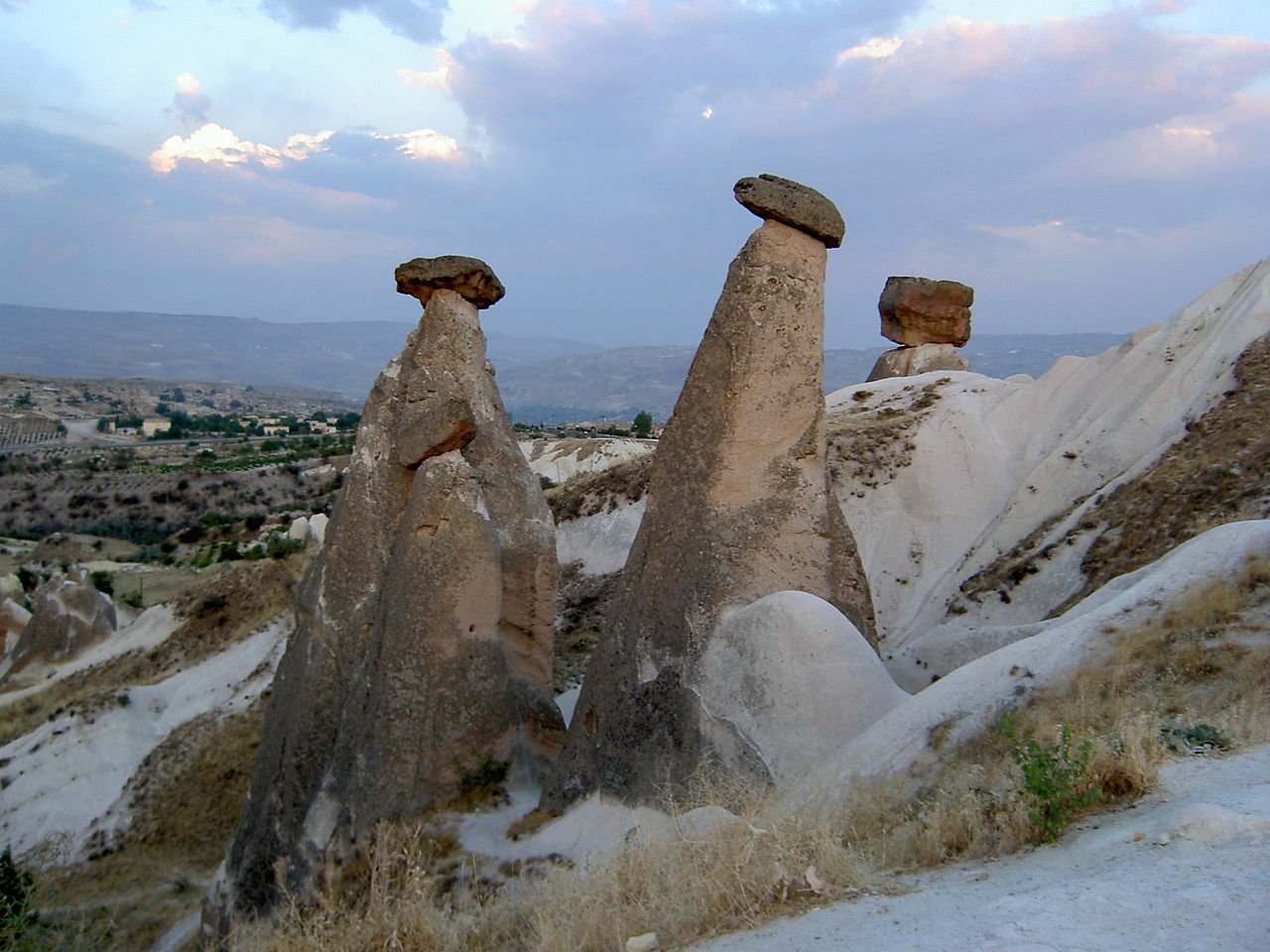
The region where fairy chimneys are most densely and famously found in Turkey is Cappadocia. These natural formations are concentrated in the districts of Ürgüp, Göreme, Avanos, and Uçhisar in the province of Nevşehir, turning the area into an open-air museum. In Göreme National Park and the surrounding valleys, fairy chimneys can be seen in their most unique and impressive forms. Especially areas like Paşabağ, Zelve, Devrent, and Ihlara Valley host hundreds of fairy chimneys in various sizes and shapes.
Fairy chimneys can also be found in other parts of Turkey outside Cappadocia. The Nallıhan district of Ankara, the İhsaniye district of Afyonkarahisar, the areas around Selime and Güzelyurt in Aksaray, and the Narman Fairy Chimneys in Erzurum are among the other significant places where these natural formations can be seen. Although the fairy chimneys in each region have different geological characteristics, their common trait is that they are unique formations shaped by nature over long periods of time. Therefore, encountering fairy chimneys across Turkey offers an impressive way to discover the country’s geological richness.
How Old Are the Fairy Chimneys in Cappadocia?

The formation of the fairy chimneys in Cappadocia dates back approximately 60 million years, to the period when volcanic activity began in the region. The layers of lava and tuff spread by the eruptions of volcanoes such as Erciyes, Hasan, and Güllüdağ were gradually eroded by natural forces, eventually taking the form of today’s fairy chimneys. This natural formation process took millions of years and resulted in fairy chimneys of various sizes and shapes. Therefore, the geological age of the fairy chimneys is tied to volcanic activity in the region and dates back millions of years.
However, the use of these impressive formations by humans began more recently, around 2,000 years ago. Cappadocia has been used as a settlement area since the Roman period, with churches, monasteries, homes, and shelters carved into the fairy chimneys. Especially during the early Christian era, Christian communities fleeing persecution used these natural sanctuaries of Cappadocia to create safe living spaces. In this respect, the fairy chimneys of Cappadocia stand out as unique structures that bear witness to both millions of years of natural history and thousands of years of human history.
How Old Are the Narman Fairy Chimneys?
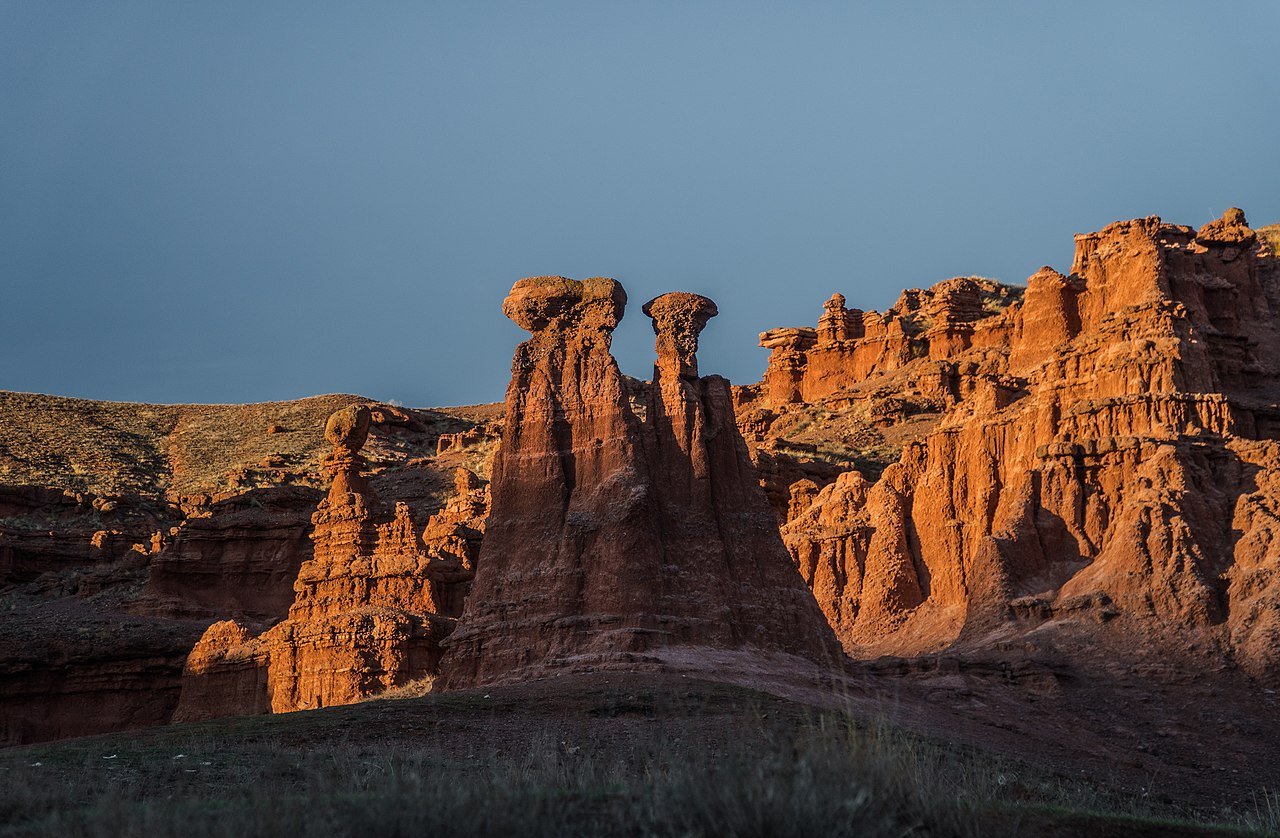
Located in the Narman district of Erzurum, the Narman Fairy Chimneys began to form approximately 2.5 to 3 million years ago. Unlike those in Cappadocia, these fairy chimneys stand out with their reddish hues, which result from the iron oxide-rich rocks found in the region. Extending along the Narman Valley, these formations were created by wind and water erosion shaping the soft tuff and clay layers. The region’s climate and geological features played a decisive role in shaping the current appearance of the fairy chimneys.
The Narman Fairy Chimneys attract the interest of the scientific community due to both their geological age and distinctive characteristics. Also known as the “Land of Red Fairies,” this area has gained fame for its resemblance to the Grand Canyon in Colorado, USA. Especially the colorful stratified structures and upright rock columns make the Narman Fairy Chimneys unique. These natural formations, millions of years old, are a fascinating destination waiting to be discovered by nature lovers and photographers alike.
How Old Are the İhsaniye Fairy Chimneys?
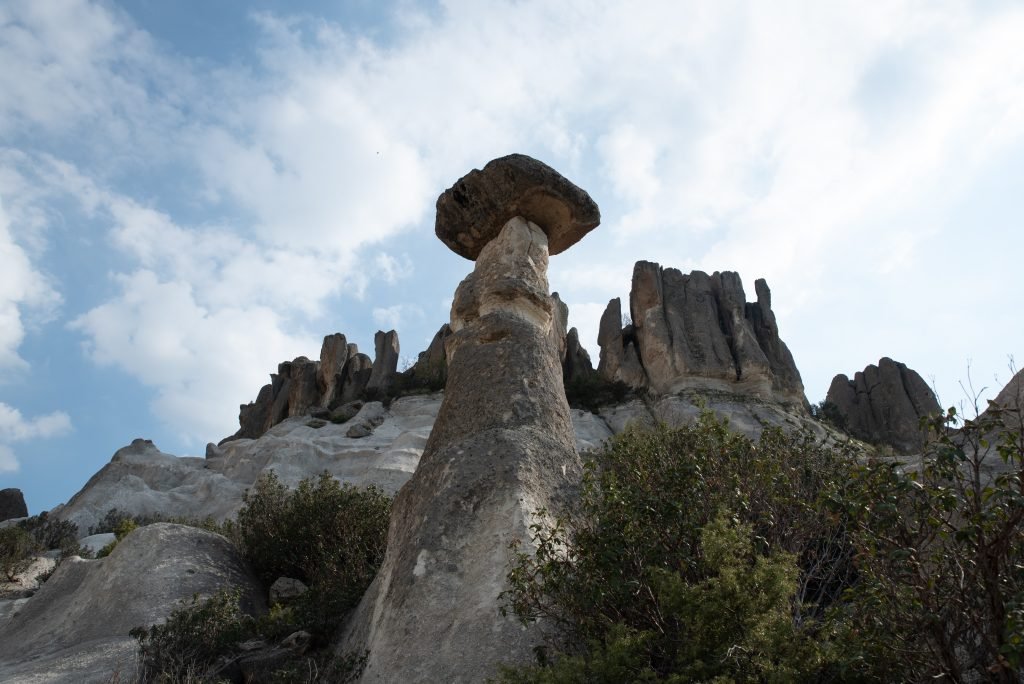
The formation of the fairy chimneys in the İhsaniye (Afyonkarahisar) region dates geologically to the Neogene–Quaternary period, approximately 8–15 million years ago. These formations were shaped by the erosion of tuff, ignimbrite, and volcanic ash deposits that emerged as a result of volcanic activity, later worn down by external forces such as wind, rain, and floods. The volcanic origin of these rocks points to a geological structure similar to that of the fairy chimneys in Cappadocia, though the formation process carries features specific to the Afyon region.
The current form of the fairy chimneys was shaped over time through surface erosion processes. Found in areas such as Döğer, Ayazini, and Kıyır near İhsaniye, these cone-shaped formations resulted from the natural erosion of volcanic tuff. Located in the Phrygian Valley, which has high geotourism potential, these natural structures offer examples worth examining both archaeologically and geologically. The differing resistance to erosion of surface layers with varying hardness has led to the development of fairy chimneys in various sizes and shapes.
How Old Are the Nallıhan Fairy Chimneys?
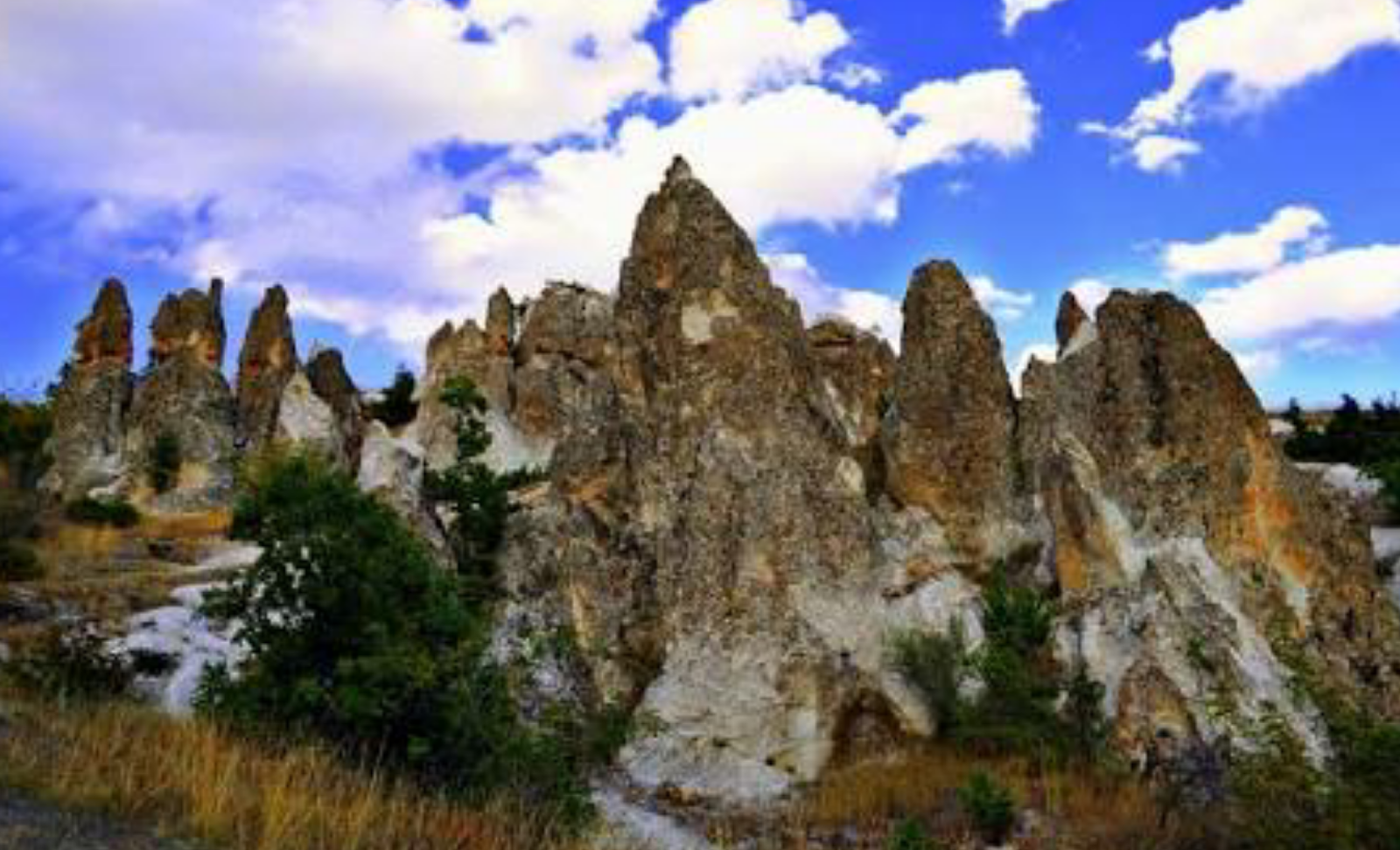
Although there is limited definitive information regarding the exact age of the fairy chimney-like natural formations in Nallıhan, geological data and field observations indicate that these structures began forming during the Late Miocene period—approximately 10 million years ago. Studies conducted around the Kız Tepesi Natural Monument in Nallıhan reveal that the area consists of ancient lakebed deposits, which, after undergoing diagenesis (transformation into rock), gained their current colorful and layered appearance through natural erosion processes.
During this process, the minerals in the sediments that settled on the lakebed, along with the oxidation of elements like iron, produced color tones such as red, brown, gray, and yellow. Later, wind, floods, and other natural forces eroded the layers, preserving the softer structures beneath solid rock blocks and shaping today’s unique hills. Thus, although the fairy chimney-like formations in Nallıhan are based on erosion mechanisms similar to those in Cappadocia, they exhibit different mineral and geological characteristics and represent a geological history of approximately 10 million years.
Was There Life in the Fairy Chimneys?
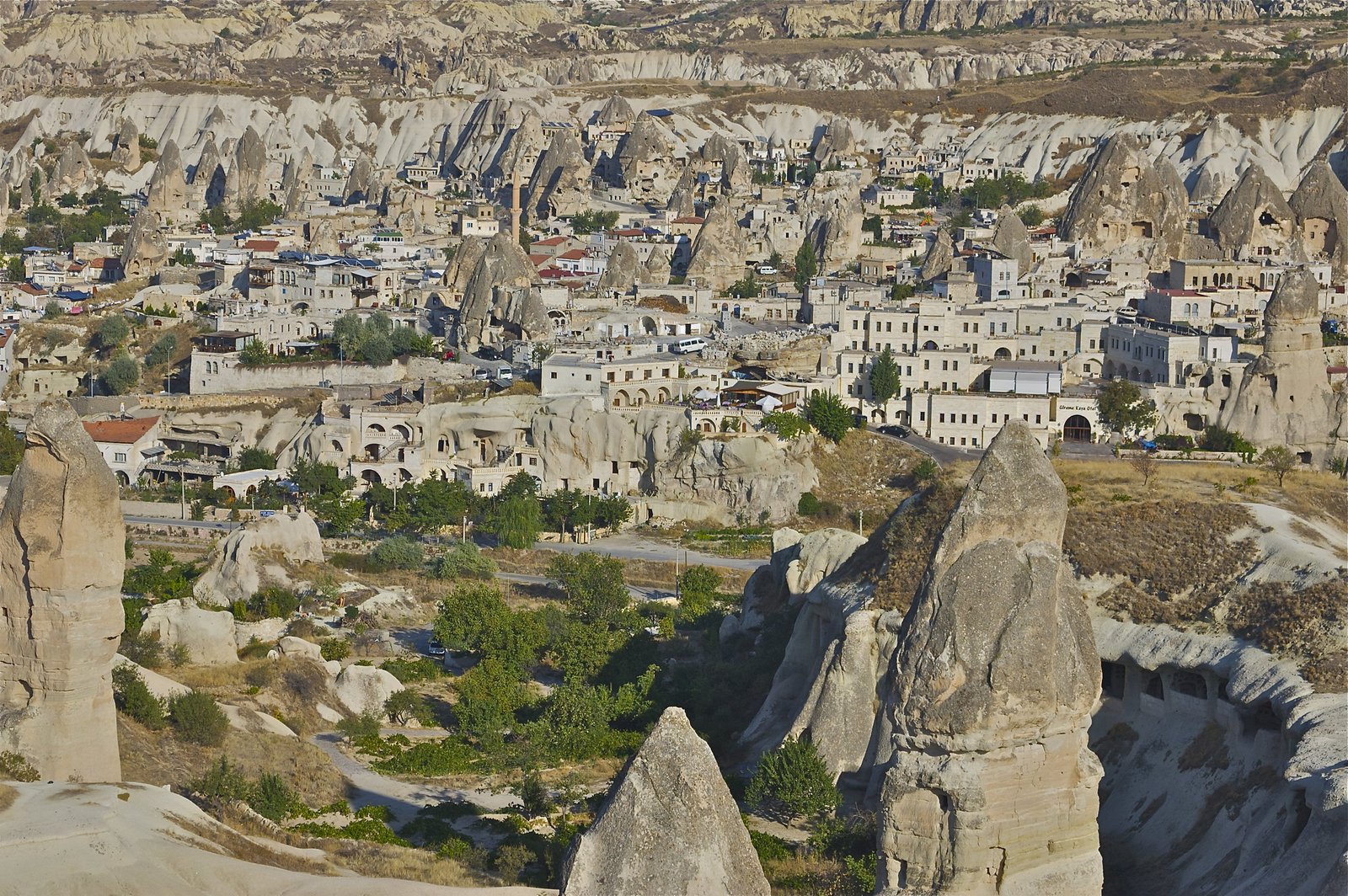
Fairy chimneys are not only natural rock formations but also structures that have been used as living spaces by humans throughout history. Especially in the Cappadocia region, communities living during the early Christian period carved shelters, places of worship, and even underground cities into these soft tuff rocks. These people, fleeing persecution, established long-term settlements in areas that were both harmonious with nature and protected from external threats. The interiors of the fairy chimneys, turned into living spaces, still bear traces of the past with frescoed churches and shelters that can be seen today.
Traces of human settlement from past periods have also been found in some fairy chimney formations in regions such as İhsaniye, Narman, and similar areas. Particularly in the Phrygian region, rock dwellings and carved structures show that there are signs of habitation in these geologically similar formations as well. These natural structures have been preferred by different cultures throughout history due to their security and climatic advantages. Today, fairy chimneys are regarded not only as natural wonders but also as historical witnesses of humanity living in harmony with nature.
When Is the Best Time to Visit the Fairy Chimneys?
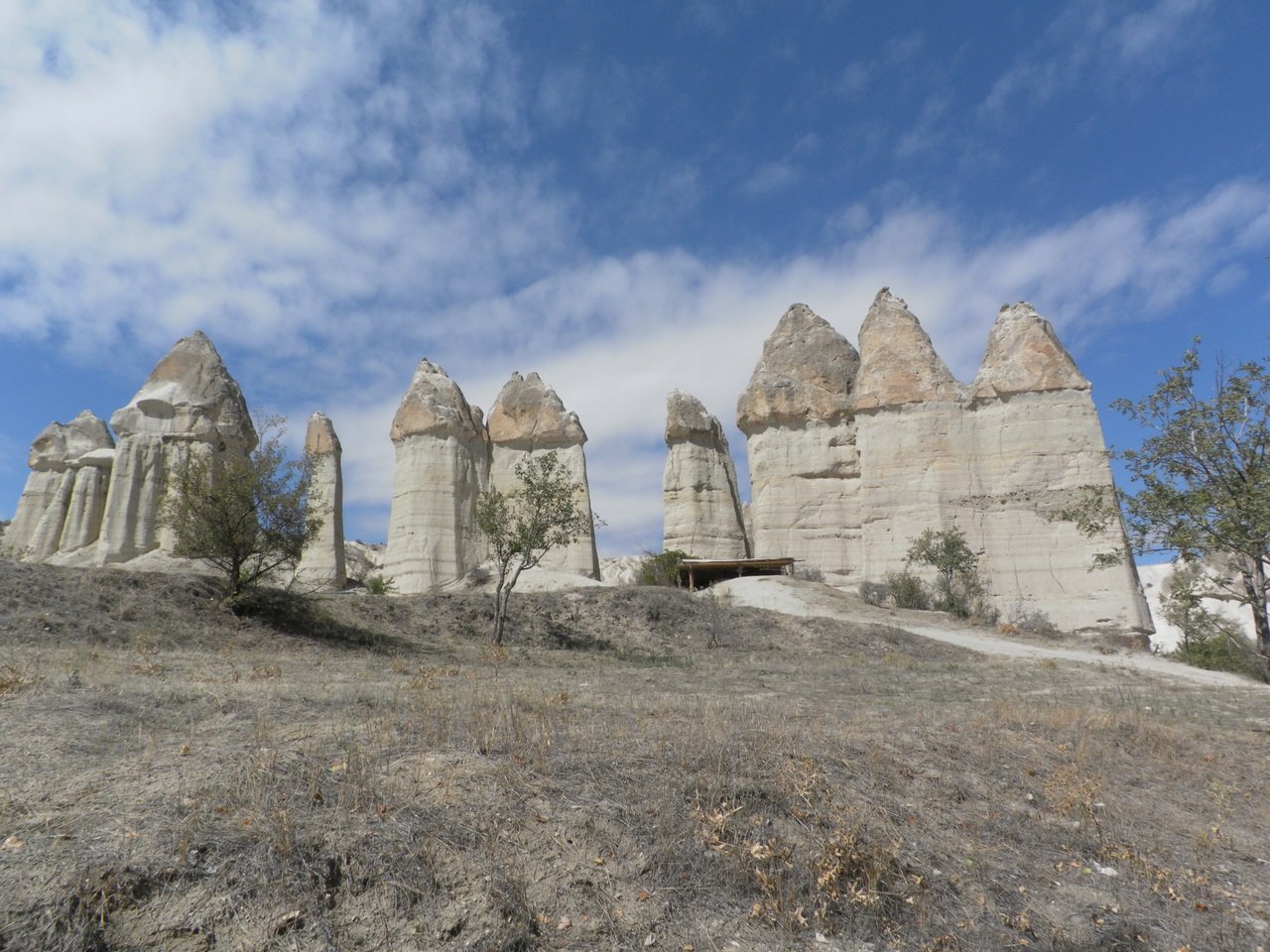
The best times to visit the fairy chimneys are during the spring (April–June) and autumn (September–October) months. During these seasons, the weather is neither too hot nor too cold, providing a comfortable environment for both hiking and outdoor activities. Especially in regions like Cappadocia, the color changes that occur at sunrise and sunset best reveal the enchanting beauty of the fairy chimneys. Additionally, hot air balloon tours are frequently organized during these periods, and the weather is generally suitable for flights.
In the summer months (July–August), the region can be quite hot and crowded, which can make excursions exhausting. In winter, although the view of the snow-covered fairy chimneys is extremely impressive, weather conditions may make some activities difficult. Nevertheless, for those seeking a quieter atmosphere and a fairytale-like snowy landscape, winter can offer a different and romantic experience. The time of visit should be planned according to expectations and desired activities.
Are the Fairy Chimneys on the UNESCO List?

In Turkey, the fairy chimneys are protected under the Göreme National Park and the Rock Sites of Cappadocia, which is included in the UNESCO World Heritage List. This region was granted “mixed” heritage status by UNESCO in 1985, based on both natural and cultural criteria. It stands out with its fairy chimneys, valleys, rock-carved churches, and underground cities.
From a natural perspective, the unique fairy chimneys were formed by the erosion of volcanic tuff layers over millions of years. At the same time, frescoed rock churches and cave settlements from the early Christian period add cultural depth to the region. Being listed by UNESCO means that the area’s geological and historical value is recognized and protected on an international level.
Why Are Balloon Tours So Popular?

Balloon tours in Cappadocia are extremely popular among visitors from around the world because they offer a bird’s-eye view of the region’s unique fairy chimney landscapes. Beginning at sunrise, these tours ascend into the sky and reveal Cappadocia’s valleys, conical rock formations, ancient settlements, and colorful natural textures. The soft light and shadows of early morning transform the scenery into a painting-like view. This visual spectacle provides a romantic experience as well as an unforgettable opportunity for photography enthusiasts to capture stunning shots.
Another reason for the popularity of balloon tours is that Cappadocia has favorable weather conditions for flying during most of the year. On calm mornings with light winds, a safe and smooth flight is possible. Additionally, the region’s volcanic terrain and open valleys provide an ideal environment for the balloons to glide effortlessly. When all these factors come together, balloon tours in Cappadocia become not just a trip, but a visual feast in the sky.
The Most Beautiful Fairy Chimney Spots for Photography Enthusiasts
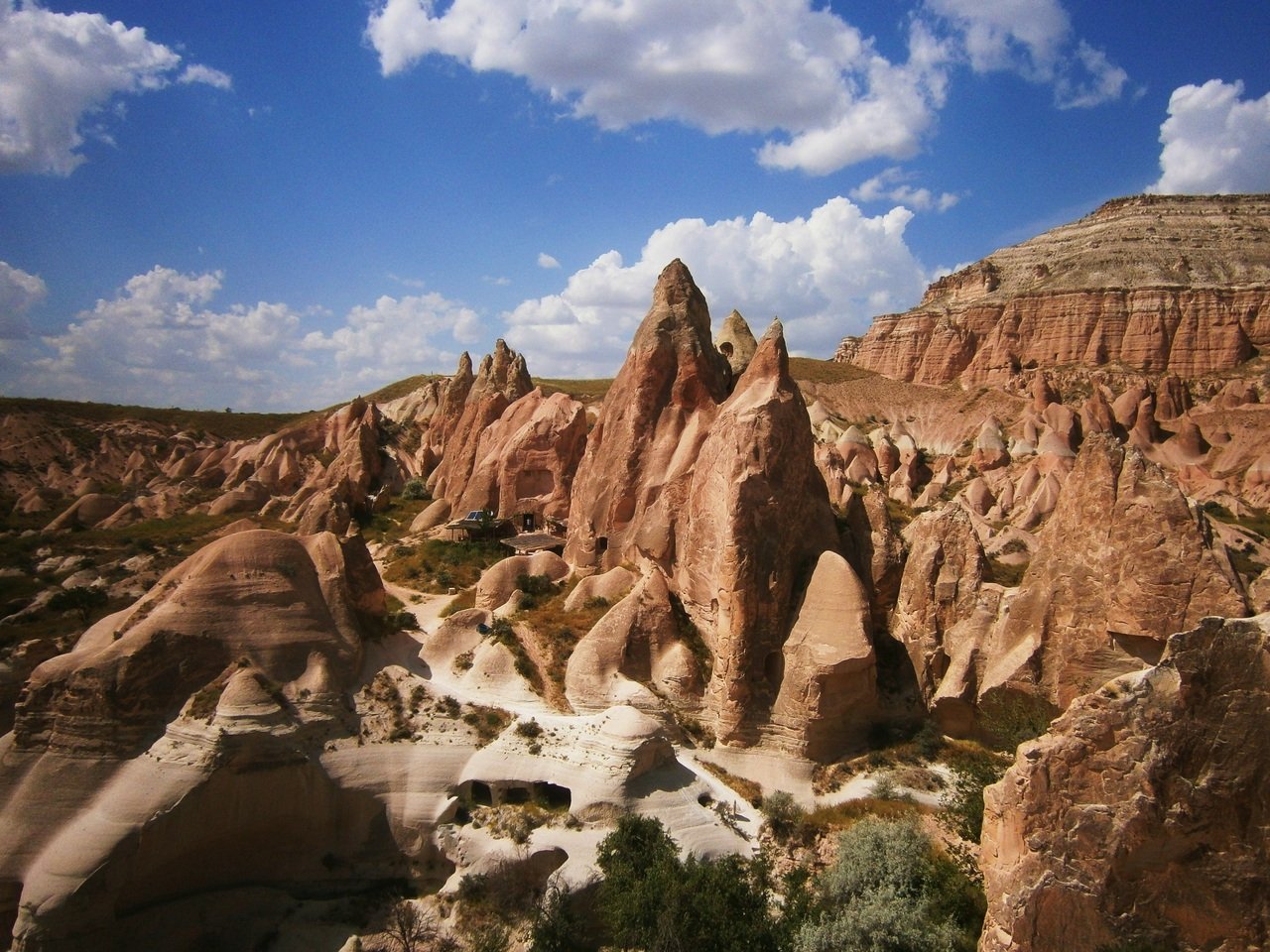
For photography enthusiasts, one of the most striking fairy chimney spots in Cappadocia is Paşabağ (Valley of the Monks). The three-headed fairy chimneys in this area attract attention with their unique shapes and offer stunning shots, especially during sunrise or sunset with the play of colors. Zelve Valley is ideal for those who want to capture a dramatic and mystical atmosphere, with its diversity of fairy chimneys and abandoned rock settlements. Exploring the valleys on foot during moments of optimal natural light results in unforgettable photographs.
Uçhisar Castle, being the highest point in the region, is perfect for panoramic landscape photography. At sunset, photos taken from the top of the castle show the fairy chimneys and valleys illuminated in golden light. Love Valley stands out with its natural silhouettes, making it suitable for both landscape and creative portrait shots. Also, capturing the fairy chimneys in the same frame as the hot air balloons rising near the Göreme Open Air Museum in the early morning creates iconic images of Cappadocia. With the right time, light, and angle, the fairy chimneys hold a special place in every photographer’s portfolio.
Legends and Myths of the Fairy Chimneys
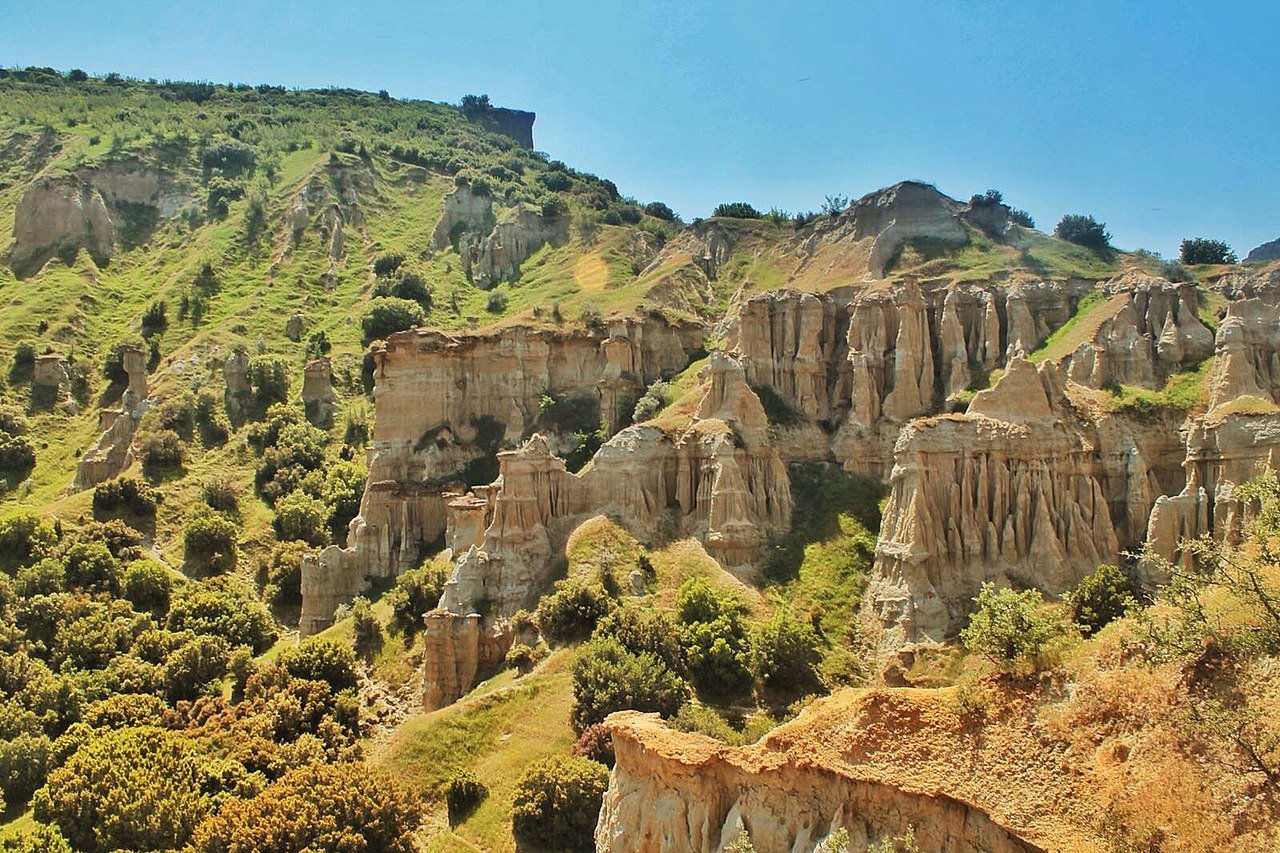
Fairy chimneys attract attention not only with their natural beauty but also with the legends and myths that have developed around them. One of the most well-known legends also inspired the origin of the name “fairy chimney.” According to the tale, it was once believed that fairies and humans lived in the same world. The fairies lived unseen among the rocky landscapes of Cappadocia and occasionally helped humans. However, when people began to notice their presence, God turned the fairies into stone, transforming them into the fairy chimneys. This legend enhances the region’s fairytale-like atmosphere and adds a mystical meaning for visitors.
Another tale claims that the fairy chimneys were the site of a battle between giants and humans. The giants, trying to destroy the humans, hurled stones by breaking apart mountains; to protect the innocent people, God stopped the stones in midair, creating the fairy chimneys as they are today. Stories like these gave rise to the belief that the fairy chimneys are not ordinary rocks but sacred structures shaped by supernatural events. Today, these tales are still told by local guides and residents, keeping Cappadocia’s mysterious aura alive.
Are the Fairy Chimneys Being Damaged?
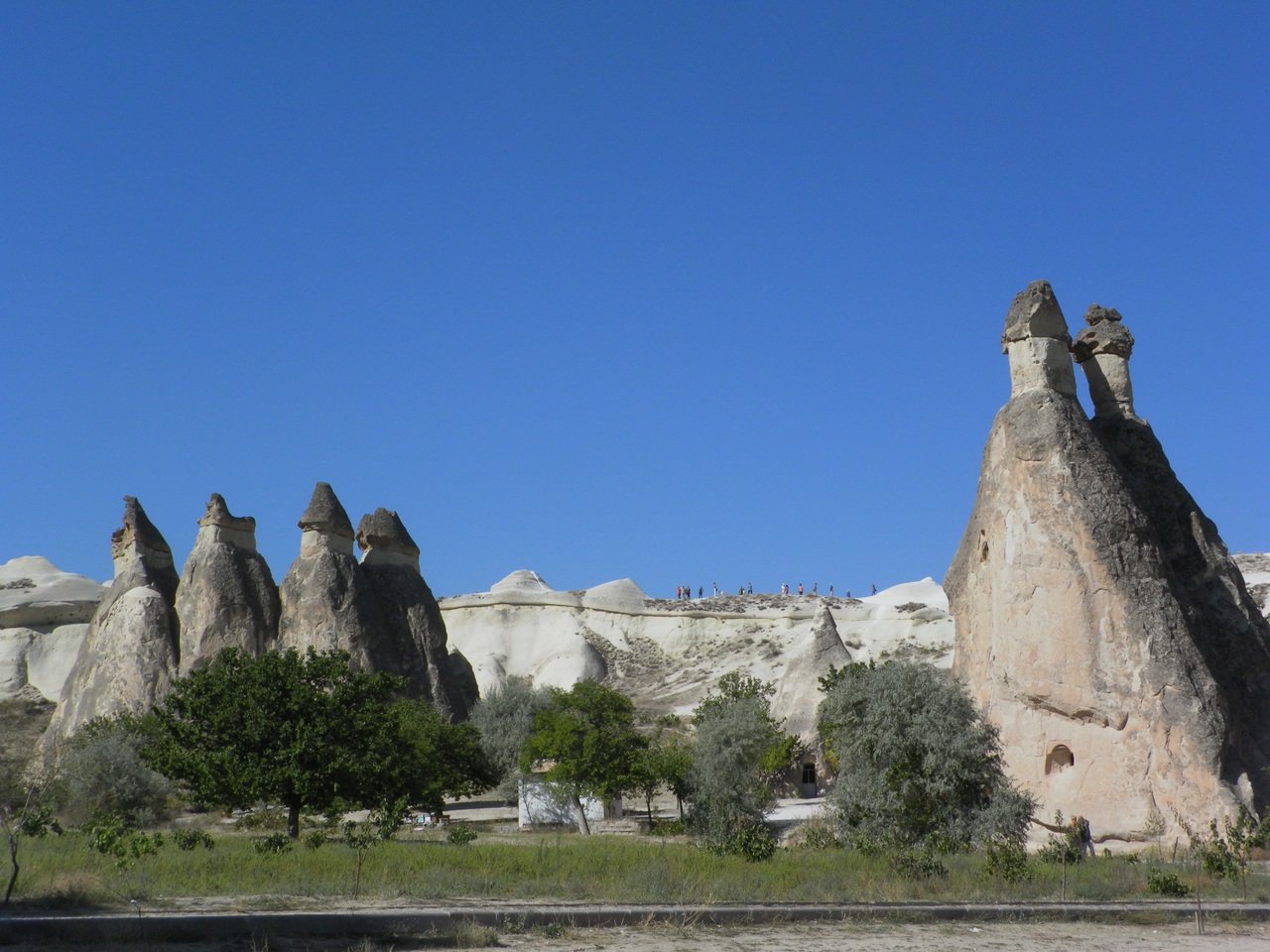
While the fairy chimneys in Cappadocia were shaped over millions of years through natural processes, today they are being damaged due to human-induced effects, particularly tourism activities. The use of trailer-backed off-road vehicles in the valleys for balloon tourism, as well as tours conducted with buses and private cars, creates vibrations and dust among the tuff rocks. This leads to damage, especially to older and more fragile fairy chimneys, even causing their caps to fall off. Additionally, the dust released into the air may contain the mineral erionite, which can pose health risks such as mesothelioma, creating dangers for both nature and human health.
Recognized by UNESCO, Göreme National Park and the Rock Sites of Cappadocia are considered heritage areas under threat due to the pressure of over-tourism. Moreover, road construction, urban development, and poorly planned tourism expansion have caused deep cracks in some fairy chimneys, which experts warn could result in irreversible damage to the structures. While UNESCO officials allow certain fairy chimneys to collapse naturally, they continue to carry out controlled restoration and maintenance efforts with visitor safety as a top priority.
